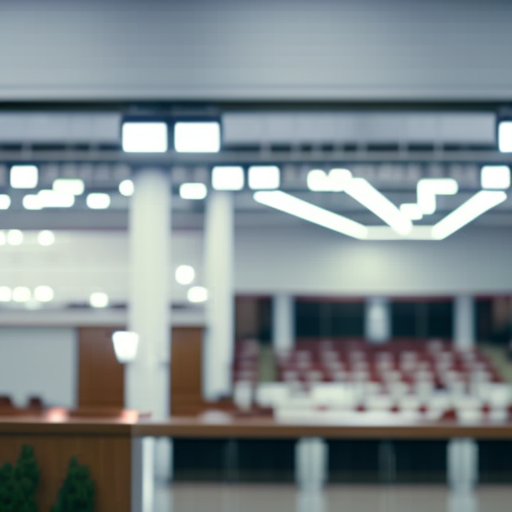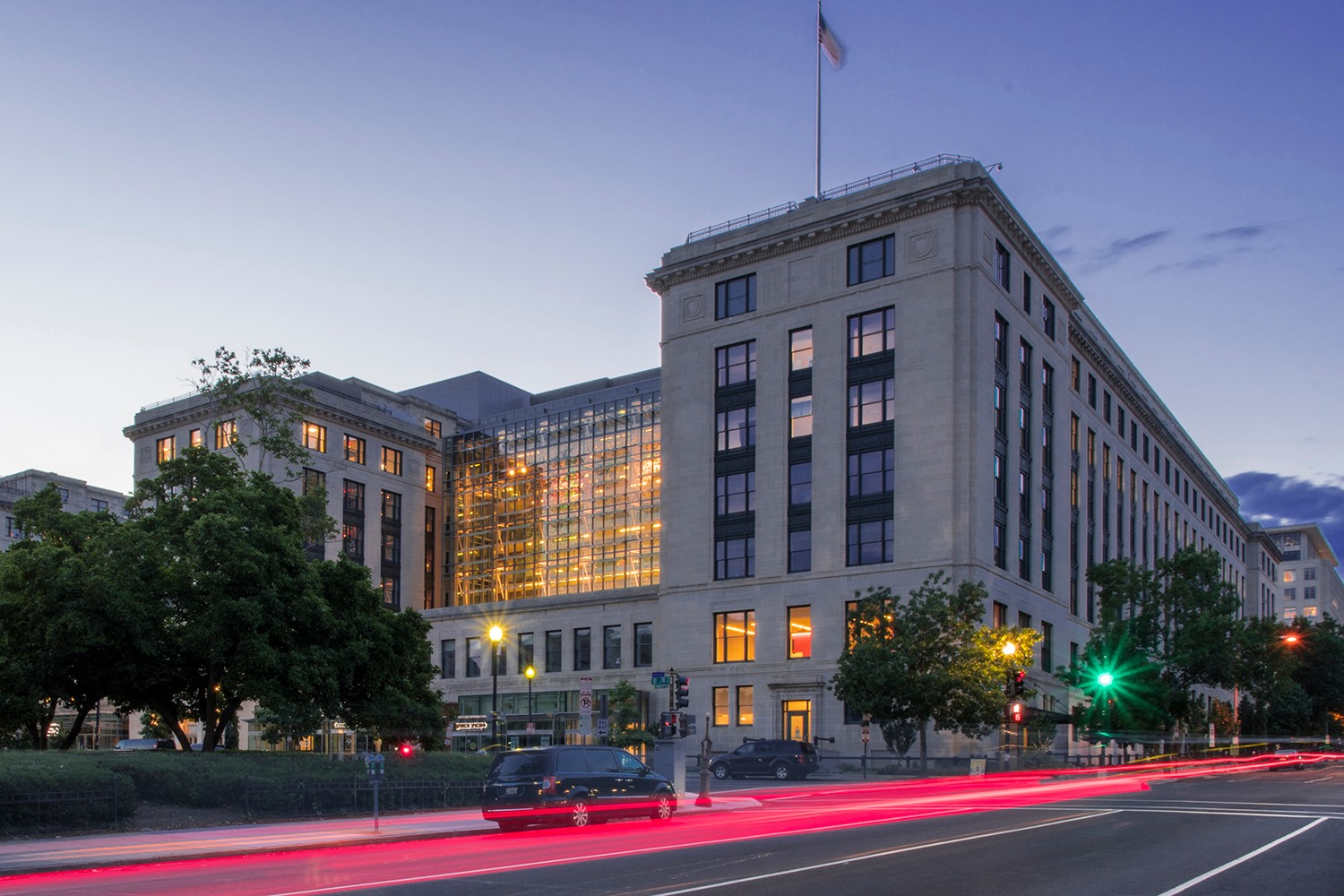

General Services Administration and Pacific Northwest National Laboratory publish LED and Controls Guidance for Federal Buildings
WASHINGTON — GSA’s Green Proving Ground (GPG) program, in collaboration with Pacific Northwest National Laboratory, recently released LED Lighting and Controls Guidance for Federal Buildings [PDF – 7 MB] as part of the agency’s commitment to sustainability and reducing costs to taxpayers.
Lighting systems have a tremendous impact on building energy use. Depending on a building’s age and lighting system, lighting consumes between 10% and 25% of a building’s electricity. Conversions to LED lighting typically save 50% of electricity over a fluorescent baseline, and lighting controls can save an additional 80% of lighting energy.
In recognition of the energy used by lighting, in September 2022, Congress passed the Bulb Replacement Improving Government with High-Efficiency Technology Act, Pub. L. No. 117-202 (BRIGHT Act) requiring federal buildings to use the most life-cycle cost-effective and energy-efficient lighting products. In addition, the BRIGHT Act required GSA to issue this new guidance on the efficiency, effectiveness, and economy of those products.
Additionally, this guidance supports President Biden’s Executive Order 14057 on Catalyzing Clean Energy Industries and Jobs Through Federal Sustainability and its associated Federal Sustainability Plan, which sets a goal of net-zero operational emissions for the federal government by 2050.
Topics discussed in the guide include:
- Financial inputs for lighting decisions.
- LED lighting and system features.
- Steps for designing a lighting control system.
- Energy-savings capabilities.
- Enhanced performance capabilities.
“The federal government is committed to transitioning its real-estate portfolio to net-zero by 2045, and GSA’s Green Proving Ground program is helping meet that charge,” said Elliot Doomes, Commissioner of GSA’s Public Buildings Service. “GPG’s evaluations of emerging technologies mitigates risk for first movers and provide invaluable guidance on the most effective deployment of these innovations.”
For more information, see LED and Controls Guidance for Federal Buildings, GSA’s Green Proving Ground, and attend a webinar on Feb. 8 at 12 p.m. ET.
###
About GSA
GSA provides centralized procurement and shared services for the federal government, managing a nationwide real estate portfolio of nearly 370 million rentable square feet, overseeing over $100 billion in products and services via federal contracts, and delivering technology services that serve millions of people across dozens of federal agencies. GSA’s mission is to deliver the best customer experience and value in real estate, acquisition, and technology services to the government and the American people. For more information, visit GSA.gov and follow us at @USGSA.
About GSA’s Green Proving Ground (GPG) Program
The GPG program works with third-party evaluators to test innovative early commercial building technologies in federally owned buildings. The program enables GSA to make sound investment decisions in next-generation building technologies based on their real-world performance. To date, following favorable evaluation results, 32 GPG-evaluated technologies have been deployed in more than 700 facilities in GSA’s real-estate portfolio. For more information, visit www.gsa.gov/gpg.
About Pacific Northwest National Laboratory (PNNL)
PNNL is one of the U.S. Department of Energy national laboratories, managed by the DOE’s Office of Science. PNNL advances the frontiers of knowledge, taking on some of the world’s greatest science and technology challenges. The lab collaborates with academia in fundamental research and with industry to transition technologies to market. For more information, visit pnnl.gov.
SDGs, Targets, and Indicators
-
SDG 7: Affordable and Clean Energy
- Target 7.3: By 2030, double the global rate of improvement in energy efficiency
- Indicator: Energy savings capabilities of LED lighting and controls
-
SDG 9: Industry, Innovation, and Infrastructure
- Target 9.4: By 2030, upgrade infrastructure and retrofit industries to make them sustainable, with increased resource-use efficiency and greater adoption of clean and environmentally sound technologies and industrial processes
- Indicator: Adoption of LED lighting and controls in federal buildings
-
SDG 11: Sustainable Cities and Communities
- Target 11.6: By 2030, reduce the adverse per capita environmental impact of cities, including by paying special attention to air quality and municipal and other waste management
- Indicator: Reduction in electricity consumption from lighting systems in federal buildings
-
SDG 13: Climate Action
- Target 13.2: Integrate climate change measures into national policies, strategies, and planning
- Indicator: Net-zero operational emissions for the federal government by 2050
Table: SDGs, Targets, and Indicators
| SDGs | Targets | Indicators |
|---|---|---|
| SDG 7: Affordable and Clean Energy | Target 7.3: By 2030, double the global rate of improvement in energy efficiency | Energy savings capabilities of LED lighting and controls |
| SDG 9: Industry, Innovation, and Infrastructure | Target 9.4: By 2030, upgrade infrastructure and retrofit industries to make them sustainable, with increased resource-use efficiency and greater adoption of clean and environmentally sound technologies and industrial processes | Adoption of LED lighting and controls in federal buildings |
| SDG 11: Sustainable Cities and Communities | Target 11.6: By 2030, reduce the adverse per capita environmental impact of cities, including by paying special attention to air quality and municipal and other waste management | Reduction in electricity consumption from lighting systems in federal buildings |
| SDG 13: Climate Action | Target 13.2: Integrate climate change measures into national policies, strategies, and planning | Net-zero operational emissions for the federal government by 2050 |
Analysis:
The article discusses the release of the LED Lighting and Controls Guidance for Federal Buildings, which is part of the General Services Administration’s (GSA) commitment to sustainability and reducing costs. Based on the content of the article, the following SDGs, targets, and indicators can be identified:
SDG 7: Affordable and Clean Energy
This SDG is addressed in the article through the focus on energy efficiency and the use of LED lighting and controls in federal buildings. The article mentions that conversions to LED lighting save 50% of electricity over a fluorescent baseline, and lighting controls can save an additional 80% of lighting energy. This aligns with Target 7.3, which aims to double the global rate of improvement in energy efficiency by 2030. The indicator for this target is the energy savings capabilities of LED lighting and controls.
SDG 9: Industry, Innovation, and Infrastructure
This SDG is connected to the article’s content as it discusses the upgrade of infrastructure in federal buildings through the adoption of LED lighting and controls. The article mentions that the Bulb Replacement Improving Government with High-Efficiency Technology Act requires federal buildings to use the most life-cycle cost-effective and energy-efficient lighting products. This aligns with Target 9.4, which aims to upgrade infrastructure and retrofit industries to make them sustainable. The indicator for this target is the adoption of LED lighting and controls in federal buildings.
SDG 11: Sustainable Cities and Communities
This SDG is relevant to the article’s content as it highlights the reduction in electricity consumption from lighting systems in federal buildings through the use of LED lighting and controls. The article mentions that lighting consumes between 10% and 25% of a building’s electricity, and conversions to LED lighting can save 50% of electricity. This aligns with Target 11.6, which aims to reduce the adverse per capita environmental impact of cities. The indicator for this target is the reduction in electricity consumption from lighting systems in federal buildings.
SDG 13: Climate Action
This SDG is connected to the article’s content as it mentions President Biden’s Executive Order 14057 on Catalyzing Clean Energy Industries and Jobs Through Federal Sustainability, which sets a goal of net-zero operational emissions for the federal government by 2050. This aligns with Target 13.2, which aims to integrate climate change measures into national policies, strategies, and planning. The indicator for this target is the net-zero operational emissions for the federal government by 2050.
Source: gsa.gov







